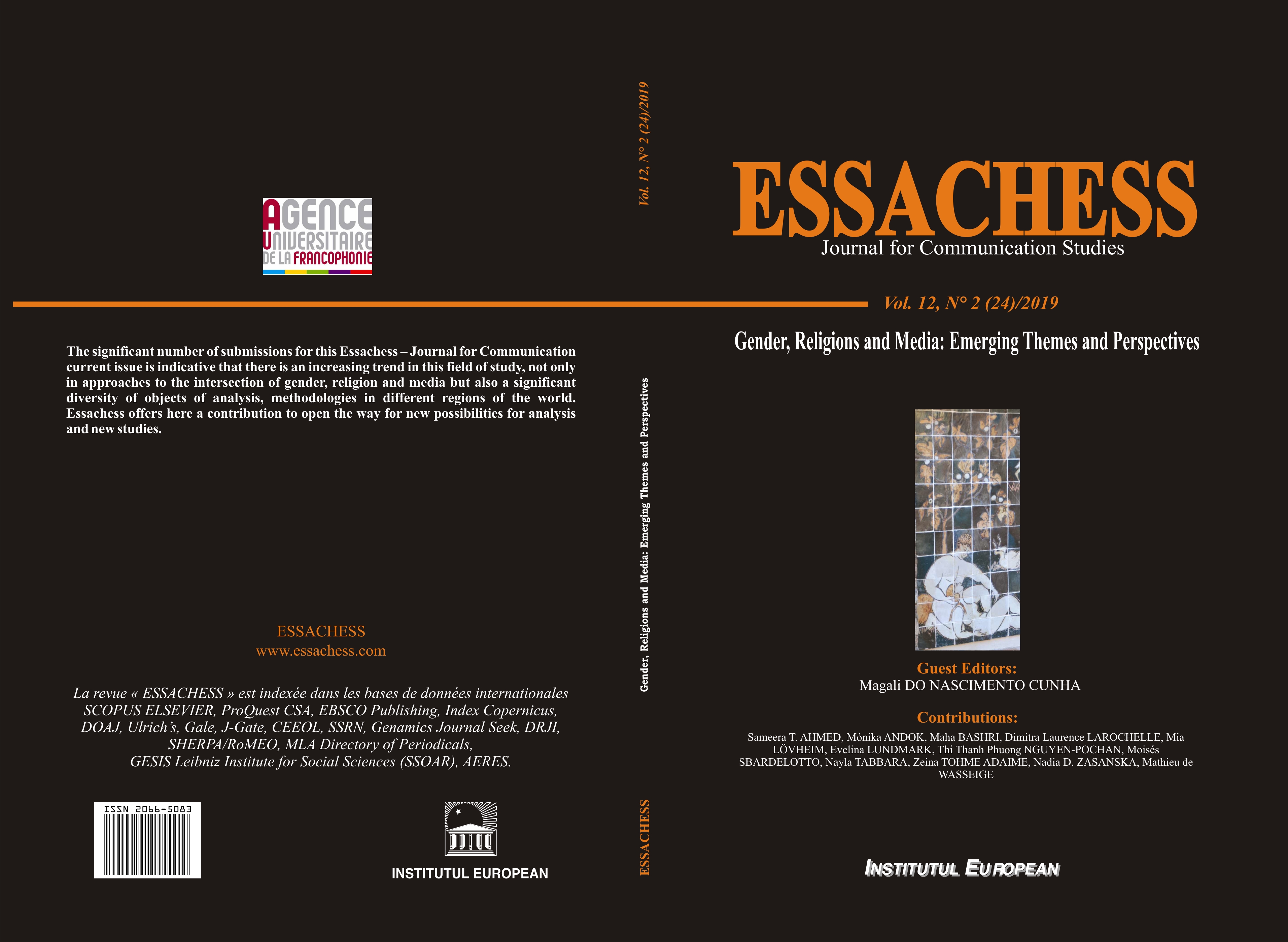“Diversidade Católica” Case: Relations and Tensions between Homoaffectivity and Religiosity in Digital Circulation
“Diversidade Católica” Case: Relations and Tensions between Homoaffectivity and Religiosity in Digital Circulation
Author(s): Moisés SbardelottoSubject(s): Politics / Political Sciences, Anthropology, Social Sciences, Gender Studies, Media studies, Political Sciences, Communication studies, Sociology, Theology and Religion, Comparative politics, Cultural Anthropology / Ethnology, Theory of Communication, Sociology of Culture, Sociology of Politics, Sociology of Religion
Published by: ESSACHESS
Keywords: mediatization; mediatization of religion; homoaffectivity; socio-digital networks; Facebook;
Summary/Abstract: In societies in mediatization, an increasingly intense process of communicational empowerment of persons and collectives emerges, which can also be seen in the realm of religion. In socio-digital platforms such as Facebook, there are numerous cases of unofficial, non-institutional, alternative religious presences, which may publicly exhibit internal conflicts within religions. In this context, this article analyzes the communicational action of the group “Diversidade Católica” (Catholic Diversity) on Facebook, specifically the process of preparation and divulgation of the 1st National Meeting of LGBT Catholics, held in Rio de Janeiro, Brazil, in 2014. To understand this phenomenon, this paper reflects on the concept of mediatization of religion and the emergence of “lay-amateurs” in digital practices. As a conclusion, it is pointed out that the digital environment becomes an alternative public space for religious minorities, who can also say a “public and networked word” about religions, such as Catholicism, exponentiating its religious “diversity” in the fabric of social relationships. Inside the alleged homogeneity of a religion such as Catholicism, there is the emergence of its pluralism and polysemy in the communicational metamorphosis of practices and beliefs, that are reinvented in relation to what is dominant, hegemonic, traditional and conventional in the Catholic historical context.
Journal: ESSACHESS - Journal for Communication Studies
- Issue Year: 12/2019
- Issue No: 24 (2)
- Page Range: 165-185
- Page Count: 20
- Language: English

